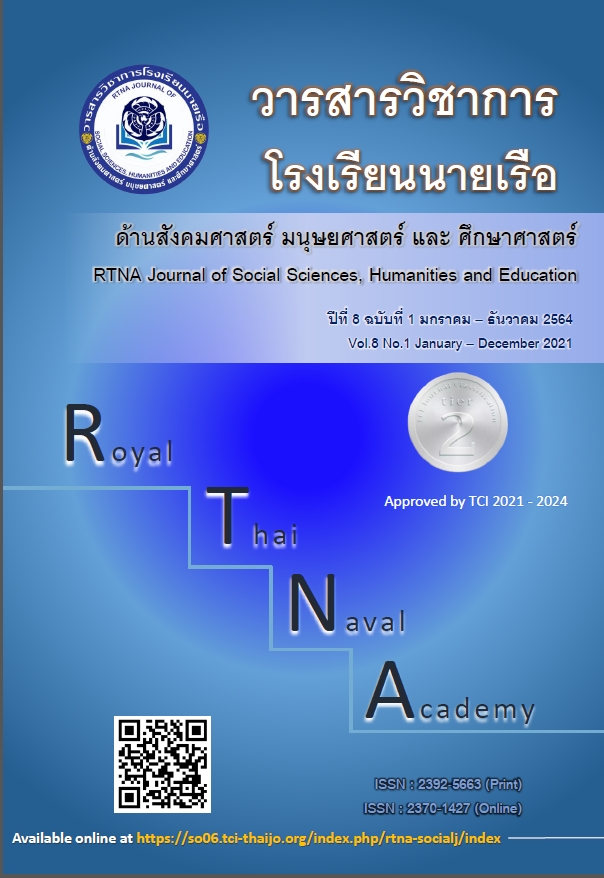Death preparation based on Buddhist concepts
Keywords:
Buddhist paradigm, Death preparation, Buddhist healthy death, Life and deathAbstract
The study of death is limited and remains a mystery to humans. According to the Buddhist principles, death is a common condition associated with birth, regarding with three interrelated symptoms between life and death. These are Aniccata (impermanence), Dukkhata (the state of being subject to suffering) and Anattata (soullessness) that affect the happiness and suffering of all beings. There are two aspects of death in Buddhism: death and birth, and death and cessation. The first death is the death of the mortal people, upon death, it still has to be reborn in various realms according to karmic fruits, but the second death, death and cessation, is the death of Arahant, who has none of all desires and will not be born again. The concept of Buddhism therefore is the way of treating death with the ultimate goal of never being born again, so it can be regarded as true death. The Buddhists have to learn, practice, and train their body and mind in order to lead to the transformation of themselves from the mundane level to the supramandane level, with the main methods which are the Sila (precepts), Samadhi (meditation) and Panna (wisdom). As for the attitude towards death and the way of dealing with it, the more people consider death to be normal, it will only greatly reduce the suffering caused by death. Acquaintance with death to face it consciously is a good quality death according to Buddhism.
References
กาญจนา จิตต์วัฒน. (2554). การบูรณาการการเตรียมตัวตายแบบเถรวาทกับวัชรยาน (ปริญญาพุทธศาสนาดุษฎีบัณฑิต สาขาวิชาพระพุทธศาสนา). มหาวิทยาลัยมหาจุฬาลงกรราชวิทยาลัย. นครปฐม.
โกมาตร จึงเสถียรทรัพย์. (2550). วัฒนธรรมความตายกับวารสุดท้ายของชีวิต คู่มือ เรียนรู้มิติสังคมของการดูแลผู้ป่วยระยะสุดท้าย. นนทบุรี: สำนักวิจัยและสุขภาพ.
พระครูอุทัยปริยัติโกศล (เสถียร ยอดสังวาลย์). (2554). ปริศนาธรรมเกี่ยวกับประเพณีการตายของภาคอีสาน (วิทยานิพนธ์พุทธศาสตรมหาบัณฑิต สาขาวิชาพระพุทธศาสนา). มหาวิทยาลัยมหาจุฬาลงกรณมหาวิทยาลัย. นครปฐม.
พระพรหมคุณาภรณ์ (ป.อ.ปยุตฺโต). (2550). การแพทย์ยุคใหม่ในพุทธทัศน์. กรุงเทพฯ: สหธรรมมิก.
พระมหาบัวพันธ์ ฉนฺทโสภโณ. (2553). ศึกษาการเตรียมตัวตายตามหลักมรณานุสสติในคัมภีร์ฝ่าย
เถรวาท การเตรียมตัวตายอย่างสงบตามหลักพุทธธรรม. กรุงเทพฯ: มหาวิทยาลัยมหาจุฬาลงกรณราชวิทยาลัย.
เปรมใจ หวังสิริไพศาล. (2545). ความตายและการเตรียมตัวตายของผู้สูงอายุ กรณีศึกษาพื้นที่เขตคลองเตย. กรุงเทพฯ: โรงพิมพ์แห่งจุฬาลงกรณ์มหาวิทยาลัย.
รัตนพงษ์ ก๋องตา. (2548). การเตรียมตัวตายอย่างสงบตามหลักพุทธธรรม. (สาระนิพนธ์ศาสนศาสตรบัณฑิต). มหาวิทยาลัยมกุฏราชวิทยาลัย. นครปฐม.
ลดารัตน์ สาภินันท์. (2545). ภาวะธรรมทัศน์ในผู้สูงอายุและการเตรียมตัวเกี่ยวกับความตาย (วิทยานิพนธ์พยาบาลศาสตรมหาบัณฑิต). มหาวิทยาลัยเชียงใหม่. เชียงใหม่.
วรรษมน โฆษะวิวัฒน์. (2559). มรณศึกษา : วิชาที่ศึกษาความตายเพื่อให้เราเข้าใจการมีชีวิต, สืบค้น 31 มีนาคม 2564 จาก https://thematter.co/social/what-is-death-education/12989
ศิริมา เทพสุภา. (2551). ความเข้าใจเกี่ยวกับความตายในพระพุทธศาสนากับจริยธรรมทางพยาบาล. (วิทยานิพนธ์จิตวิทยา). มหาวิทยาลัยรามคำแหง. กรุงเทพฯ.
สกล สิงหะ. (2559). จิตตปัญญาเวชศึกษา 227: มรณวิทยา (Thanatology). สืบค้น 31 มีนาคม 2564, จาก https://www.gotoknow.org/posts/588247
หลวงตาหมอ. (2555). ถึงอย่างไรก็ต้องตาย มารู้จักความตายกันดีกว่าแต่ยังไม่ต้องรีบตายนะโยม. สมุทรปราการ: โรงพิมพ์ล้านคำ.
Cole, T. R. and others. (2001). Thanatology as moral philoshopy. University of Texus, (5-8).
Luciana, M. (2001). Emergence of Thanatology and Practice in Death Education. Journal of death and dying, 64(2), 159-162.
Meagher, D. K., & Balk, D. E. (Eds.). (2013). Handbook of thanatology : The essential body of knowledge for the study of death, dying, and bereavement. (2nd ed.). London: Routledge.
Tuten, M. (2011). Death with dignity in Oregon. Oncology forum, (58-64).
Downloads
Published
Issue
Section
License
The author has the sole responsibility for the material published in RTNA Journal of Social Sciences, Humanities, and Education, which the editorial team may not agree on that material.
RTNA Journal of Social Sciences, Humanities, and Education owns the copyright of the text, the illustration, or other material published in the journal. No parts or the whole of the material published may be disseminated or used in any form without first obtaining written permission from the academy.






